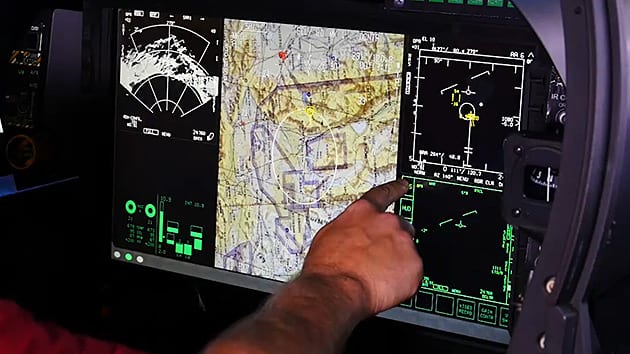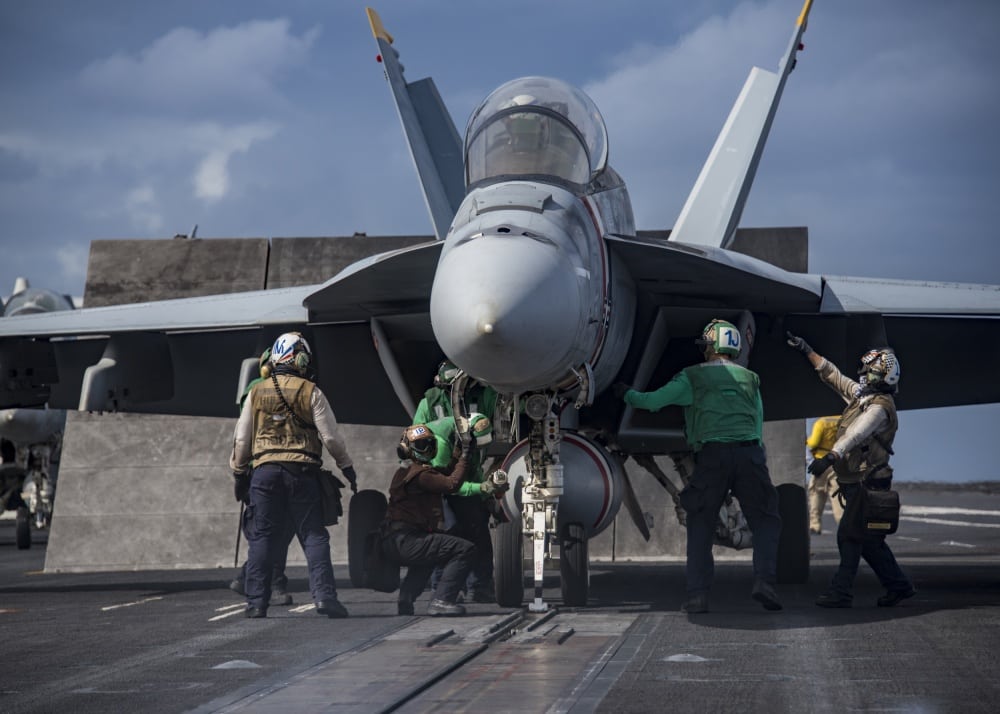
Dozens of Boeing [BA] F/18 E/F Super Hornets are to receive avionics upgrades under the Block III program to improve information exchange speeds and allow the sharing of streaming video and other data.
The upgrades include a large display advanced cockpit system to allow pilots to process and share more information, a Boeing Distributed Targeting Processor Network (DTP-N) that complies with open mission systems standards, and Tactical Targeting Network Technology (TTNT) – an information pipe that allows an increase in bandwidth to collect and share time critical information using streaming video, still imagery and other means.
Data Link Solutions, LLC, a Collins Aerospace [UTX] and BAE Systems joint venture, and Viasat Inc. [VSAT] build the TTNT terminals.
DTP-N and TTNT “reduce pilot workload by utilizing the large area display and providing knowledge instead of just data to the warfighter,” Justin Gibson, a representative for Boeing, wrote in an email to sister publication, Avionics International.
The Block III upgrades also include conformal fuel tanks and signature improvements, Boeing said.
Last year, Boeing received a $4 billion contract to deliver 78 Block III Super Hornets to the Navy through fiscal 2021 and is to deliver 28 such upgraded jets to the Kuwait Air Force in the early 2020s under a $1.5 billion contract awarded in 2018. Plans call for the Block III Navy upgrades to continue through 2033.

The Navy is pursuing a Service Life Modification (SLM) effort to permit the Super Hornets to remain in service several decades more.
Boeing said it delivered the first SLM Super Hornet to the U.S. Navy this month and plans to deliver another two by April.
The first SLM Super Hornets do not carry Block III and are to extend the aircraft’s service life from 6,000 flight hours to 7,500 flight hours. Upgraded SLM aircraft in the early 2020s are to carry the Block III upgrades and to have 10,000 flight hours of service life, according to Boeing.
Navy Capt. Stephen May, co-lead for E/F/G Air Vehicles at PMA-265, said in a statement that SLM will return the Super Hornets “to the fleet in a near new condition” and “reduce burden on our maintainers, our supply system and our depot level assets within the enterprise.”